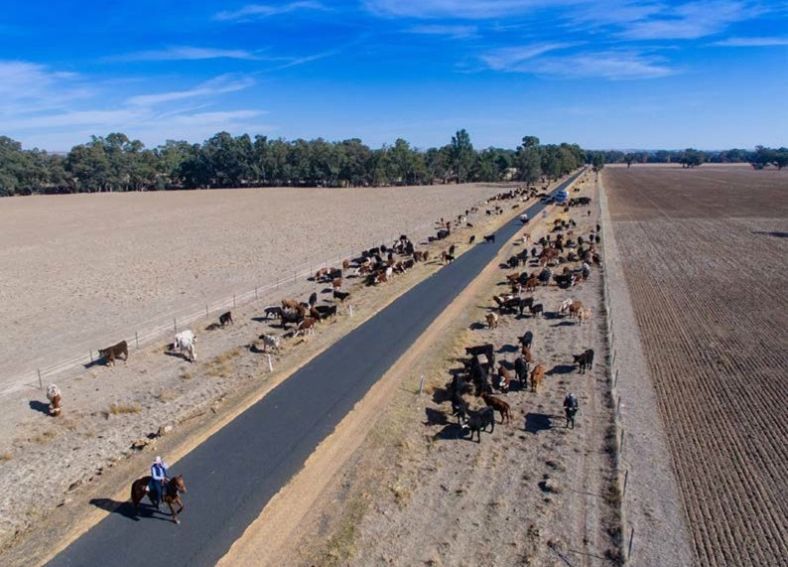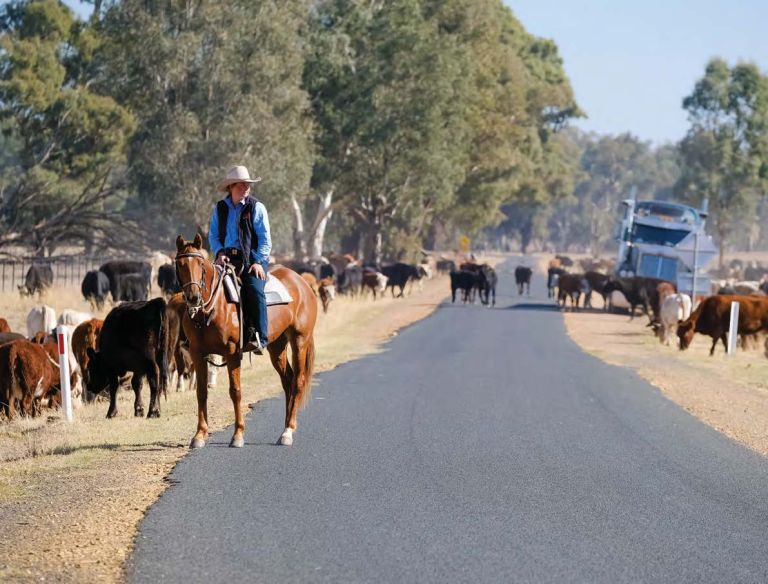What can I do on TSR?
Learn about the kinds of activities permitted on TSR in different regions and when you need a permit.
Apply for a permit
Learn what permit applies, what's required, and who to contact for assistance.
View the NSW TSR map
Map showing TSR areas, classifications and routes.
What are travelling stock reserves?
Travelling stock reserves (TSR) are parcels of Crown land reserved for use by travelling stock under the Crown Land Management Act 2016.
TSR include stock routes, which are corridors from 60 m to almost 2 kms wide, that connect watering and camping reserves generally spaced between 10 to 20 kms apart (based on a day’s walk for cattle or sheep).
Regional vegetation guides describe the different species and threatened ecological communities found in TSR across NSW.
Quick stats:
- TSR cover around 2 million hectares in NSW
- 1.5 million hectares are in the Western Division of NSW.
Travelling stock reserves - What are they?
Local Land Services video about travelling stock reserves (TSR).

Who controls and manages TSR?
- Local Land Services cares for, controls and manages around 578,000 hectares of TSR. This is around 30% of the TSR in NSW.
- In the western division, TSR are generally covered by western lands leases and, as a result, leaseholders directly manage their care and control.
How are TSR managed?
TSR are actively managed to maintain and improve their agricultural, biodiversity, and cultural values.
Why are TSR so valuable in NSW?
The reserves are largely uncleared public land. In many cases they contain the highest quality and most interconnected remnants of native vegetation. The land is protected, with high levels of biodiversity and threatened species. They are also vital for supporting the agricultural community.
TSR are important for agricultural productivity including for travelling stock, emergency refuge and transport to market.
Strategic grazing controls weeds, reduces fire hazard and improves conservation.
TSR create corridors that connect isolated habitats. They help native plants and animals survive changing climate. Often located on fertile soils in over-cleared areas, TSR support threatened species and habitats at risk of extinction. TSR also provide an important source of native seeds
TSR are vital for First Nations Peoples for access to Country, cultural practices, and heritage protection. Many TSR are the subject of land claims or Native Title determination. This may lead to land transfers or management agreements with First Nations people.
TSR contain many places of historic or scientific significance associated with pastoralism, droving life and coach travel.
TSR provide public open space for passive recreation such as bush walking, horse riding and bird watching. They also provide important and valued access points to rivers and creeks for fishing and boating.
All regions experience exceptional circumstances caused by fire, flood, drought or biosecurity risks that result in unforeseen or unconventional hardship or threats. TSR provide emergency refuge or fodder for stock.
TSR resources from Local Land Services
Latest travelling stock reserve news
Contact Local Land Services NSW
Our team welcome your enquiries, feedback and comments.
Local Land Services is moving to nsw.gov.au. During the change, you might find the information you are looking for at lls.nsw.gov.au

